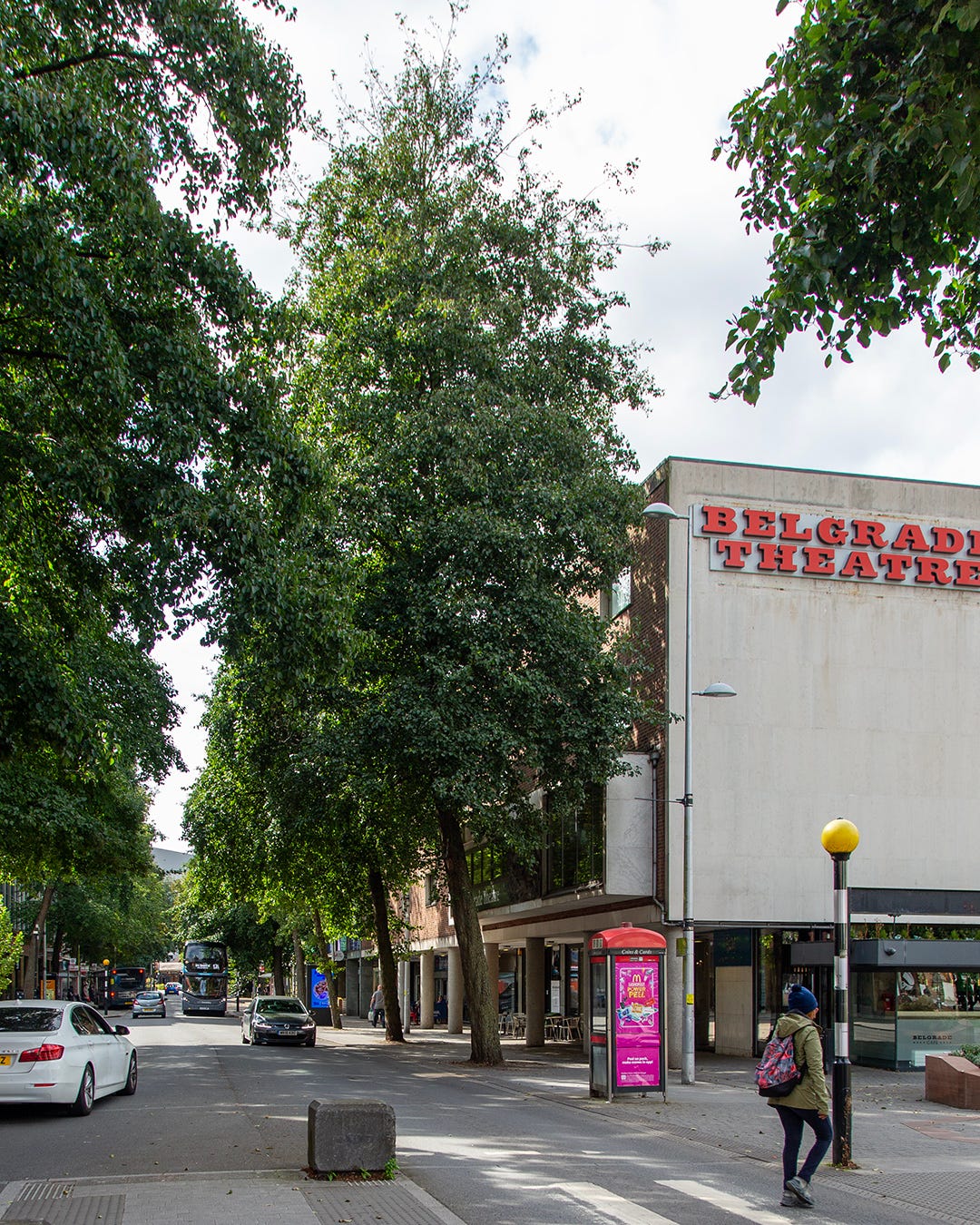‘Elegant’ is not a word often used to describe big trees. Oaks, planes, ashes and maples are sturdy, robust, awe-inspiring, but rarely elegant. One large tree that I think is worthy of this description is the Italian alder. Tall, slender and verdant, they have a vivacious elegance about them. This example in Coventry is one of a dozen or more lining Corporation Street, an avenue that must have been planted 40 or so years ago and which has come into its own in recent years as the trees have reached maturity.
Alders are often associated with water, but while the European black alder (Alnus glutinosa) frequently lines river banks in the UK, they are also perfectly happy in drier soils. In fact they are quite happy in the poorest, most disturbed, most nutrient deficient soils, such as those of a bombsite. Perhaps that is why they have been planted in Coventry, a city that suffered so much damage in the Second World War, and whose city centre was largely rebuilt in the postwar years. Combined with constant rebuilding of the largely medieval city in the centuries before, the substrate in the city centre could be described as little more than rubble. This is where the alders come into their own – not only do they thrive in such meagre conditions, their roots will actually fix nitrogen into the soil, thus improving it. Alders are therefore a great choice for difficult sites, and this species also looks particularly fine.
A couple of other Italian alder tidbits: they keep their leaves late into the autumn, not usually losing them until December, and they have distinctive heart-shaped, or cordate leaves from where their botanical name, Alnus cordata is derived.
What is it?
Italian alder
Alnus cordata
Where is it?
Corporation Street, Coventry CV1 1GX
///case.films.grows | 52.4097, -1.513675







Elegant is the right word as is beneficial. What an admirable tree!
They re rally beautiful, a new species on me. Love,y